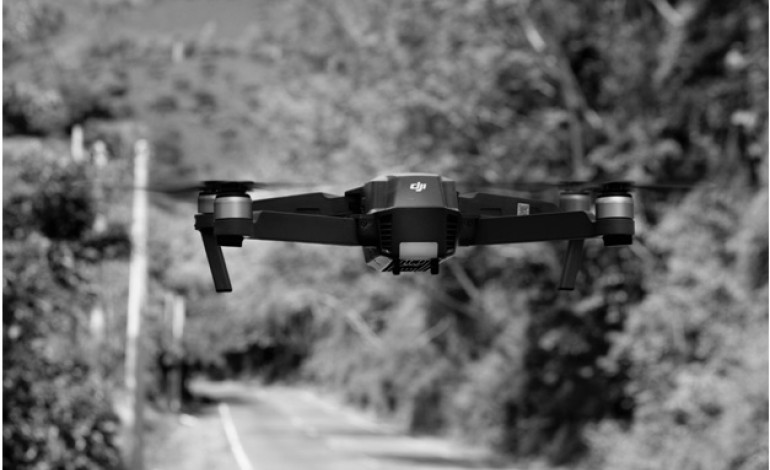Humans have always dreamed of flying. This recurrent vision is what motivated the Wright brothers to pursue their ambition of building a machine that was lighter than air, kicking off the aerospace industry we know today.
However, these achievements have not stopped us from wanting to experience the exhilarating physical arousal linked to heights and speed, and the freedom of fully independent flight. Indeed, engineers and tech enthusiasts continue to develop ever more sophisticated systems that bring us one step closer to achieving this undying goal.
First-person-view drones are considered the closest a person can get to flying like a bird. Once you put on your goggles and get your drone up in the air, it feels like your body has literally become a flying entity with the excitement of being free like the wind.
Now, none of this would be possible without the existence of materials that are extremely light yet strong enough to provide structural support to the components that make flight possible.
Today, there are many kinds of drones, but the fastest and most agile ones out there leverage the advantages of custom carbon fiber parts. Manufacturers or drone component providers are constantly kept on their toes, always trying to offer the lightest and strongest drone frames and battery packs, or the most efficient motors and rotors. But competition is fierce and many players will never rest until they design the ultimate drone.
This incessant pursuit is mainly driven by two unstoppable forces: the desire to push drone building to the limit, and the relentless determination of FPV drone racers.
FPV Drone Racing As A Sport
While radio-controlled vehicle racing has been around for years, it never reached the status of a sport. However, FPV drone racing is changing the way people think about sports. and the necessary skills an operator must have to pilot one of these birds at incredible skills through mind-bending courses.
Some place the beginning of drone racing back in 2011. A bunch of misfits and daredevils got together in Karlsruhe, Germany, and organized a series of races and challenges. Word got out, and thousands of tech enthusiasts around the world wanted their version of Karlsruhe.
Today, there are hundreds of drone racing teams and leagues that now run their own course. The prize pool in some of these events can be quite hefty, which in turn attracts more competitors, manufacturers, crowds, and, of course, sponsors.
What makes drone racing different from most competitions is how courses and challenges are designed. Traditional races are held in mostly two-dimensional arenas. With the exception of some winter sports, most tracks are quite horizontal in shape.
FPV drone racing courses are three-dimensional. Meaning that drones must race through what can be aptly described as a roller coaster track. They need to take tight corners at amazing speeds, climb as fast as they can through vertical tunnels, drop from incredible heights and stop on a dime, and then go from 0 to 100mph in two seconds.
This kind of nimbleness cannot be achieved through raw power alone. Technology today can produce incredibly powerful engines that give speed and momentum to sportscars and can put men on the moon. However, when compared to competitive FPV drones, those engines are heavy, unwieldy, gas-guzzling dinosaurs.
In 2019, a drone racing pro told BMW how drones were superior to the best sports cars out there. According to drone racing champion Andreas Hanh, high-performance drones are not as fast as sports cars in terms of top speeds, but they can take tight corners at maximum speeds and accelerate from zero to 100 mph almost instantly.
The best part about this sport is that pilots see everything from a first-person perspective. When they put on their FPV goggles, they feel the drone is part of their bodies. This means they feel the rush associated with flying or driving at devilish speeds but must also develop extremely fast reflexes to safely control their machines.
No wonder many of the best pilots out there come from the videogame world. Their skills make them natural in this highly competitive arena, and they are used to playing with highly complex simulators and racing games. However, pilots must also have extensive knowledge of electronics and engineering. This helps them keep their machines in top condition, but also tweak them so they adapt to their flying style. Here is where custom carbon fiber parts play a decisive role in the sport.
Carbon Fiber Drone Frames and Components as Sports Equipment
Now that FPV drone racing is officially a competitive sport, custom carbon fiber parts are in high demand by teams around the world.
It is no secret that custom carbon fiber parts are now ubiquitous in sports that benefit from high-performance materials to achieve increased speed, enhanced durability, and more efficient use of energy. This includes faster and more energy-efficient sports cars and racing bikes, lighter and stronger tennis rackets and golf clubs, and stiffer and more durable snowboards and skis.
Big companies are pouring money into drone racing too. ESPN and Discovery Channel have been covering official FPV drone racing events for years now, and corporate sponsors like Pepsi, GoPro, and Airbnb, all have official teams interested in developing drones that fly faster, are more agile, and are able to last longer at top speeds. This requires the utilization of lighter materials that can also withstand high-speed crashes without getting a machine out of the race.
Of course, the quality of the fibers they use will affect the overall performance of their drones and components. They need the right tow size and elastic modulus depending on the part requirements, but also the correct resin matrix for durability, strength, and weight.
That’s why specialized makers prefer partnering with carbon fiber manufacturers that understand the specific needs of drone racing. If you´re looking for custom carbon fiber parts or high-performance raw materials for your commercial or competitive drones, contact one of our experts today.

